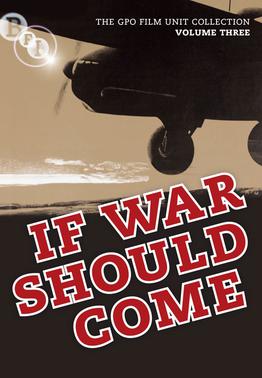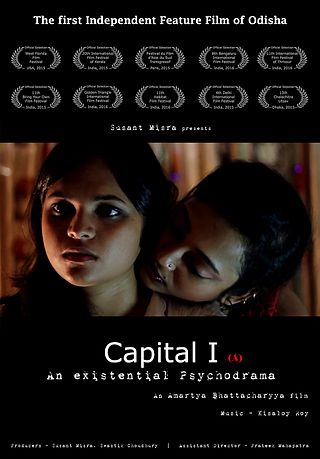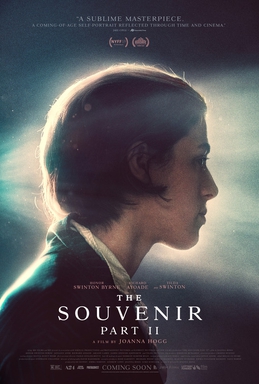A film crew is a group of people, hired by a production company, for the purpose of producing a film or motion picture. The crew is distinguished from the cast, as the cast are understood to be the actors who appear in front of the camera or provide voices for characters in the film. The crew is also separate from the producers, as the producers are the ones who own a portion of either the film studio or the film's intellectual property rights. A film crew is divided into different departments, each of which specializes in a specific aspect of the production. Film crew positions have evolved over the years, spurred by technological change, but many traditional jobs date from the early 20th century and are common across jurisdictions and filmmaking cultures.

Shadows is a 1959 American independent drama film directed by John Cassavetes about race relations during the Beat Generation years in New York City. The film stars Ben Carruthers, Lelia Goldoni, and Hugh Hurd as three black siblings, though only one of them is dark-skinned enough to be considered African American. The film was initially shot in 1957 and shown in 1958, but a poor reception prompted Cassavetes to rework it in 1959. Promoted as a completely improvisational film, it was intensively rehearsed in 1957, and in 1959 it was fully scripted.

Star Trek: The Motion Picture is a 1979 American science fiction film directed by Robert Wise and based on the television series Star Trek created by Gene Roddenberry, who also served as its producer. It is the first installment in the Star Trek film series, and stars the cast of the original television series. In the film, set in the 2270s, a mysterious and immensely powerful alien cloud known as V'Ger approaches Earth, destroying everything in its path. Admiral James T. Kirk assumes command of the recently refitted Starship USS Enterprise, to lead it on a mission to save the planet and determine V'Ger's origins.
The role of an assistant director on a film includes tracking daily progress against the filming production schedule, arranging logistics, preparing daily call sheets, checking cast and crew, and maintaining order on the set. They also have to take care of the health and safety of the crew. The role of an assistant to the film director is often confused with assistant director but the responsibilities are entirely different. The assistant to the film director manages all of the directors in development, pre-production, while on set, through post-production and is often involved in both personnel management as well as creative aspects of the production process.
Filmmaking or film production is the process by which a motion picture is produced. Filmmaking involves a number of complex and discrete stages, beginning with an initial story, idea, or commission. Production then continues through screenwriting, casting, pre-production, shooting, sound recording, post-production, and screening the finished product before an audience, which may result in a film release and exhibition. The process is nonlinear, as the director typically shoots the script out of sequence, repeats shots as needed, and puts them together through editing later. Filmmaking occurs in a variety of economic, social, and political contexts around the world, and uses a variety of technologies and cinematic techniques to make theatrical films, episodic films for television and streaming platforms, music videos, and promotional and educational films.

Principal photography is the phase of producing a film or television show in which the bulk of shooting takes place, as distinct from the phases of pre-production and post-production.
In filmmaking, dailies or rushes are the raw, unedited footage shot during the making of a motion picture. The term "dailies" comes from when movies were all shot on film because usually at the end of each day, the footage was developed, synced to sound, and printed on film in a batch for viewing the next day by the director, selected actors, and film crew members. After the advent of digital filmmaking, "dailies" were available instantly after the take and the review process was no longer tied to the overnight processing of film and became more asynchronous. Now some reviewing may be done at the shoot, even on location, and raw footage may be immediately sent electronically to anyone in the world who needs to review the takes. For example, a director can review takes from a second unit while the crew is still on location or producers can get timely updates while travelling. Dailies serve as an indication of how the filming and the actors' performances are progressing. The term was also used to describe film dailies as "the first positive prints made by the laboratory from the negative photographed on the previous day".
A script supervisor is a member of a film crew who oversees the continuity of the motion picture including wardrobe, props, set dressing, hair, makeup and the actions of the actors during a scene. The notes recorded by the script supervisor during the shooting of a scene are used to help the editor cut the scene. They are also responsible for keeping track of the film production unit's daily progress. The script supervisor credit is typically in the closing credits of a motion picture. Script supervisors are a department head and play a crucial role in the shooting of a film. It is the script supervisor's job to monitor the camera shots, seeking to maintain coherence between the scenes.
A traditional production board, stripboard, or production strip is a filmmaking term for a cardboard or wooden chart displaying color-coded strips of paper, each containing information about a scene in the film's shooting script. The strips can then be rearranged and laid out sequentially to represent the order one wants to film in, providing a schedule that can be used to plan the production. This is done because most films are shot "out of sequence," meaning that they do not necessarily begin with the first scene and end with the last. For logistical purposes, scenes are often grouped by talent or location and are arranged to accommodate the schedules of cast and crew. A production board is not to be confused with a stripboard used for electronics prototyping.
Haxan Films is a production company headquartered in Orlando, Florida. They are famous for producing the cult classic independent horror film The Blair Witch Project. The name is taken from the 1922 Swedish/Danish silent movie Häxan.

A film director is a person who controls a film's artistic and dramatic aspects and visualizes the screenplay while guiding the film crew and actors in the fulfilment of that vision. The director has a key role in choosing the cast members, production design and all the creative aspects of filmmaking.

A film – also called a movie, motion picture, moving picture, picture, photoplay or (slang) flick – is a work of visual art that simulates experiences and otherwise communicates ideas, stories, perceptions, feelings, beauty, or atmosphere through the use of moving images. These images are generally accompanied by sound and, more rarely, other sensory stimulations. The word "cinema", short for cinematography, is often used to refer to filmmaking and the film industry, and the art form that is the result of it. Films can vary in genre, style, length and format, and they are typically produced for entertainment, education, cultural expression, or commercialpurposes. They are usually shown in theaters, on television, or via streaming platforms.
Back-to-back filming is the practice of shooting two or more films as one production, thus reducing costs and time.

Dongala Mutha is a 2011 Indian Telugu-language action thriller film directed by Ram Gopal Varma. The film stars Ravi Teja, Charmy, Prakash Raj, Lakshmi Manchu, Sunil, Bramhanandam, Subbaraju and Supreeth Reddy. This film is the first of its kind in Indian cinema as it was shot with just 7 crew members and in a record of 5 days. Prior to filming, Varma announced that this film has no budget and that the cast and crew will not be taking remunerations until the film hits theaters.

Men of the Lightship is a short propaganda film produced by the Crown Film Unit for the British Ministry of Information in 1940, the year after the beginning of the Second World War. It dramatises the bombing of the East Dudgeon lightship by the Luftwaffe on 29 January 1940 and was designed to portray Germany as a barbaric enemy. An opening narration explains the traditional understanding of lightships as neutral vessels during war.

The Goat Life is an upcoming survival drama film written, directed, and co-produced by Blessy. The film is an international co-production involving companies in India and the United States. It is an adaptation of the 2008 Malayalam novel Aadujeevitham by Benyamin, which is based on a true incident. The film stars Prithviraj Sukumaran as Najeeb, a Malayali immigrant labourer who finds himself forced into slavery as a goatherd on a secluded farm in Saudi Arabia.

Capital I is a 2015 Odia language independent feature film written and directed by Amartya Bhattacharyya. This film, tagged as an existential psychodrama, is the first independent feature film of Odisha. The film is produced by Susant Misra and Swastik Choudhury. This film is shot on a shoe-string budget without any film industry involvement. This film marks the feature film debut of Amartya Bhattacharyya as a writer, director, cinematographer and editor. All actors in this film are non-professional actors, and all of them make their feature film debut in ‘Capital I'. Kisaloy Roy makes his debut as a music director, and so does Amrita Chowdhury as a Choreographer.

The Souvenir Part II is a 2021 drama film, written and directed by Joanna Hogg. It is a sequel to The Souvenir (2019). It stars Honor Swinton Byrne, Jaygann Ayeh, Richard Ayoade, James Spencer Ashworth, Harris Dickinson, Charlie Heaton, Joe Alwyn, and Tilda Swinton.
Friends, Foes & Fireworks is a 2018 independent mumblecore film from Australia. It is directed by Ivan Malekin and Sarah Jayne Portelli and is noted for being improvised and filmed in a single night on New Year's Eve.

Rust is an upcoming American Western film written and directed by Joel Souza. The film stars Alec Baldwin, Patrick Scott McDermott, Travis Fimmel, Frances Fisher, and Josh Hopkins.










